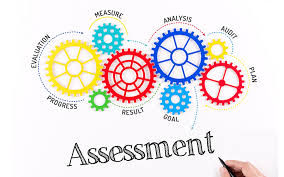3-Way Matching Explained with Benefits and Use Cases
- enriquehowarth
- May 6
- 2 min read
When managing business expenses, especially in procurement and accounts payable, accuracy is everything. One proven method to ensure this accuracy is 3-way matching. This process plays a critical role in preventing payment errors, fraud, and accounting discrepancies. Let’s break down what 3-way matching means, explore its benefits, and see how it’s used in real business scenarios.

What is 3-Way Matching?
3-way matching is an internal control process used by businesses to ensure that payments are made only for goods and services that were actually ordered and received. It involves cross-verifying three essential documents:
Purchase Order (PO) – This outlines what was ordered, including quantity and price.
Receiving Report (Goods Receipt) – This confirms what was delivered and accepted by the business.
Invoice – This is the supplier’s request for payment.
Only when all three documents align—meaning the items ordered, received, and billed match—will payment be approved. This process adds a layer of verification that protects the business from overpayments, duplicate payments, or fraudulent transactions.
Key Benefits of 3-Way Matching
Prevents Overpayments and Fraud
By requiring documentation at every step, 3-way matching ensures that businesses only pay for what they actually receive. This eliminates unauthorized charges and reduces the risk of paying fake or duplicate invoices.
Improves Accuracy in Accounts Payable
Automating the 3-way matching process helps finance teams verify details quickly and correctly, reducing human error. This results in cleaner financial records and smoother audits.
Enhances Vendor Relationships
With fewer disputes over payments and quicker resolution of discrepancies, vendors are more likely to view the business as a reliable partner. This can lead to better terms and ongoing collaboration.
Supports Compliance and Auditing
Businesses operating in regulated industries benefit from having a solid paper trail. The 3-way match process provides clear, documented proof that internal policies and external regulations are being followed.
Use Cases of 3-Way Matching
Retail Businesses: A clothing retailer orders 1,000 t-shirts. Upon delivery, the warehouse confirms only 950 were received. The invoice is for 1,000. Thanks to 3-way matching, the retailer only pays for 950, avoiding overpayment.
Manufacturing Companies: A manufacturer orders raw materials monthly. By matching the purchase order, goods receipt, and invoice, they ensure accurate material cost tracking, helping them control production costs effectively.
Healthcare Facilities: Hospitals regularly purchase medical supplies. 3-way matching helps them avoid billing errors and maintain compliance with healthcare regulations by validating each transaction.
Final Thoughts
Implementing 3-way matching might seem time-consuming at first, but the long-term benefits in accuracy, compliance, and cost control are well worth it. For businesses dealing with high volumes of purchases, automating this process with workflow software can further streamline operations and reduce the approval time. Whether you’re a small business or a large enterprise, integrating 3-way matching into your accounts payable process is a smart step toward financial efficiency and control.
SITES WE SUPPORT
SOCIAL LINKS



Comments